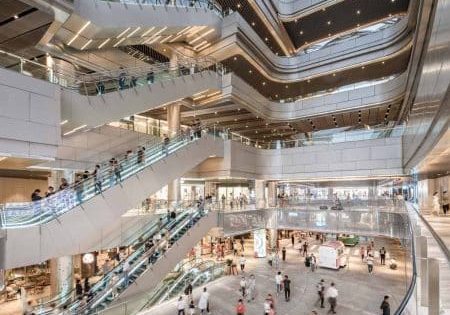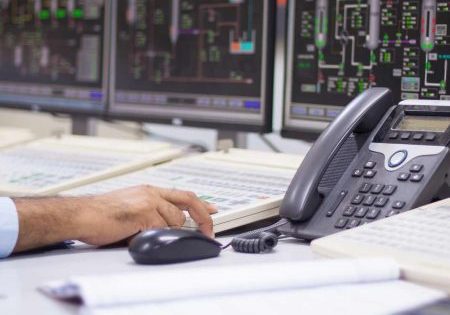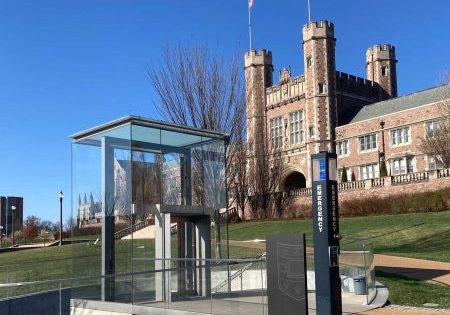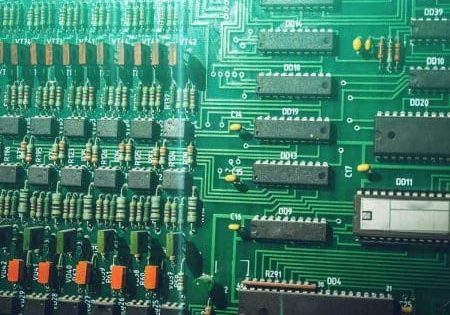The Evolution and Future of Special-Operation Lifts in Modern Facilities
Sep 1, 2024

A look at the elevator’s place in modern times and future trends
by Zeidan Loutfi
From the time they were invented, elevators have indeed come a long way. From a mechanical contraption that contributed to the transportation of people and goods to a modern-day, complex, smart system that plays a pivotal role in modern infrastructure, they have evolved by leaps and bounds.
In fact, they have become so advanced that they are even customized to serve the needs of specific industries and functions, like to accommodate stretchers for the healthcare industry or transport machinery in industrial setups.
This article explores the place elevators have today from the perspective of certain industries and innovations, and looks at future trends of these highly specialized elevators.
Specialized Lifts for Operational Efficiency in Specialized Environments
Healthcare Facilities
When it comes to healthcare facilities, assurance of the highest standards of hygiene, efficiency and reliability is a basic need. To this end, custom-made lifts that have been designed for hospitals and clinics must adhere to such standards to transport medical staff and patients, as well as sensitive equipment, in a safe and efficient manner. As such, some custom features might include larger cabins to accommodate medical equipment and stretchers, with antibacterial surfaces to minimize the risk of infection.
In this digitally advanced age, the integration of smart control systems in modern healthcare-centric elevators is a given. The advantages of such systems are myriad — from enabling staff to move quickly and efficiently between floors to prioritizing quick transportation in emergency services. These lifts are built to optimize lift usage, where, for example, during an emergency, a smart lift system can override the regular controls to provide immediate access to emergency staff.
One such other smart system in healthcare lifts is biometric access. This can help hospitals enhance their safety systems by restricting access to only authorized personnel on certain floors with operating theaters or those that contain pharmaceutical storage.
Advanced Elevators for High-Security Buildings
High-security buildings like financial institutions, government facilities or data centers require lifts that help protect sensitive data and can also handle the physical security of its occupants. In such cases, technologies like biometric access come into play. This can vary from facial recognition like iris scanners to fingerprint recognition systems, too.
The Internet of Things (IoT) also comes into play in such cases, providing control over the lift’s operation while providing monitoring in real time. IoT integrations can also provide information on usage patterns of personnel, communicate with building security systems about a possible breach even or enable remote lockdowns in case of an emergency.
So advanced are these systems that, if enabled with smart control systems, they can even respond dynamically to threats like a security breach, for instance, where they will either redirect elevators to safe zones or lock them down altogether to prevent unauthorized access to critical areas of the building. Such is the marvel that is the modern-day elevator!
Specially Designed Lifts for Industrial Buildings
Many industrial settings, such as warehouses, manufacturing plants and energy facilities, require lifts that can operate in harsh conditions, handle extremely heavy loads and be integrated into the facility’s daily workflow. Considering these requirements, such special-operation lifts often feature a stable, robust construction that includes reinforced doors and cabins, if need be, to account for wear and tear.
Smart control systems and IoT also come into play in such scenarios. Smart control systems can enhance the safety aspects in daily work and improve efficiency by performing custom functions like monitoring the lift’s speed, load and operational status while providing real-time information to maintenance teams, thereby enabling predictive maintenance. This helps prevent breakdowns and downtime, thus aiding productivity and operational efficiency.
As far as IoT integration is concerned, industrial lifts are able to communicate with other systems and machinery within the facility — like in the case of a lift being integrated with an inventory-management system in a warehouse to ensure that goods are moved and tracked efficiently. Such applications highlight the undisputed importance of special-operation lifts in today’s day and age.
Other Special Applications
The use of special-operation lifts extends far beyond healthcare, high security and industrial settings. They are also applicable to:
- Residential Building With Enhanced Security Needs: There are many high-end residential buildings that also have biometric access and smart control systems to safeguard the security and privacy of occupants.
- Luxury Hotels: Lifts in luxury hotels, too, are customized in such a way that they provide a comfortable and seamless experience for guests, reducing wait time and optimizing service with the help of smart control systems.
- Public Transportation Hubs: Special-operation lifts are also used by airports and train stations to handle a high volume of passengers and luggage in an efficient manner with advanced features like voice control and real-time updates on the flight or train status.
Smart Technologies and the Role They Play in Elevator Systems
As we continue to evolve in the technological age that is the 21st century, the role of smart technologies has been expanding at breakneck speed. Not only are these technologies used to enhance the efficiency and functionality of lifts, but they are also used to contribute to a safer and more efficient user experience. While examples of smart technology have been briefly touched upon, let’s further delve into the provisions and possibilities of these technologies.
Smart Control Systems
Smart control systems are the trump card of modern-day special operation lifts, packing in a host of advanced features that truly leave a lasting impression among patrons. Such systems use new-age, advanced algorithms and real-time data to provide the best value for optimal operations, reducing wait times, as well as improving efficiency, to name some benefits. For example, certain specialized lifts provide destination control systems, which allow passengers to input their desired floor before entering the lift, or grouping passengers with the same or similar destinations, thereby minimizing stops.
Biometric Access
Biometric access technology is fast gaining popularity in the case of not only high-security environments, but also in hotels and residential buildings. The use of this technology not only enhances the well-being of its occupants by providing added security, but also improves day-to-day convenience as it eliminates the need for access cards or keys.
In industrial settings too, this can be programmed to prevent the unauthorized use of lifts, thereby enhancing safety and security.
IoT Integration
The IoT has just as much relevance in elevator systems, revolutionizing the way special operation lifts are used in various settings. IoT-enabled lifts are designed to interact with their environment, too, with in-built sensors that are connected to the internet, allowing them to communicate with other systems and devices in real time. This makes way for precise monitoring, aids with planned maintenance and enhances overall operational efficiency.
Future Trends in Special-Operation Lifts
Going forward, we can expect to see special-operation lifts designed with even more features that are industry- or task-specific with the advent of special emerging trends that will play a part in further enhancing their applications and capabilities. Let’s explore some of these aspects.
AI and Machine Learning
AI and machine learning are making way for major advances in the operation and maintenance of special-operation lifts. AI algorithms can process vast amounts of data, which can be used toward further fine-tuning operations to the benefit of the establishments and spaces.
Machine learning, a subset of AI, enables lifts to learn from the past and make way for a more efficient future accordingly, as it is constantly learning how to provide the best output from previous usage patterns. For instance, a lift in a high-security building could eventually learn to prioritize certain users during busy times and peak hours, ultimately improving the user experience at a significant level while also improving efficiency.
Sustainable Design
With sustainability gaining even more importance as time goes by given that the world has become more environmentally conscious, the value of sustainable design is increasing considerably when it comes to special-operation lifts. As far as sustainability goes in this context, it could manifest in the form of using eco-friendly materials while building the lift, reducing energy consumption through smart technologies and techniques, as well as minimizing the environmental impact of lift operation, bringing value beyond measure to the table.
Modern-day lifts are designed with energy-efficient components on an increasing basis, some of which include LED lighting and regenerative drives that can capture and reuse energy. If we are to consider this from the perspective of specific applications in an industry, let’s consider how, in healthcare facilities, lifts can be equipped with energy-saving features like standby mode, which reduces power consumption when the lift is not in use.
Advanced Communication Systems
Advanced communication systems have been changing the face of special-operation lifts, enhancing the way they interact with users, technologies and building systems. For instance, voice technology can be used to allow users to operate the lift by using voice commands, thereby considerably improving accessibility for differently abled individuals. Such aspects are critical when it comes to elevating spaces and community life and making them more accessible to all.
Conclusion
The timeline of the evolution of special-operation lifts provides insight into the broader trends in design and technology, setting the pace for the future of elevator systems. As we turn the page to see what the future holds, it is evident that the range of applications will only further increase to create even more specialized features that are industry-specific, thus meeting the needs of today while also anticipating the requirements of tomorrow, providing efficient, safe and sustainable solutions for all.
Get more of Elevator World. Sign up for our free e-newsletter.









